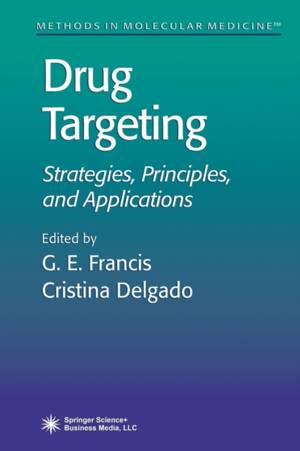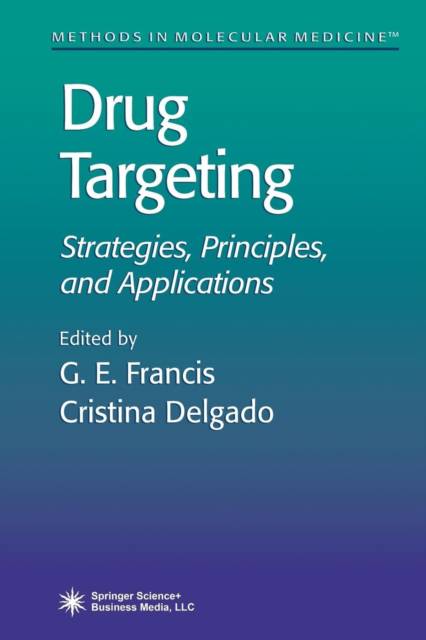
- Afhalen na 1 uur in een winkel met voorraad
- Gratis thuislevering in België vanaf € 30
- Ruim aanbod met 7 miljoen producten
- Afhalen na 1 uur in een winkel met voorraad
- Gratis thuislevering in België vanaf € 30
- Ruim aanbod met 7 miljoen producten
Zoeken
Drug Targeting
Strategies, Principles, and Applications
€ 167,95
+ 335 punten
Omschrijving
Advances in understanding the molecular mechanisms of disease together with the advent of recombinant DNA and other technologies have opened opportunities for a vast array of novel therapeutic biopharmaceuticals and diagnostic agents. However, even natural biomolecules present a myriad of problems that limit their potential as pharmaceutical agents. Rapid degra- tion and elimination, immunological reactions, and toxicity are often asso- ated with new biopharmaceuticals, much as with conventional agents. Targeted delivery systems have the potential to increase the efficacy of existing diagnostic and therapeutic agents and also create an opportunity for the use of new pharmaceuticals, substances that themselves can be harmful to normal tissues. Both passive and active targeting have been exploited. Most active targ- ing strategies have focused on antibody conjugates since preparation of highly specific monoclonal antibodies is well established. However, a new wave of c- jugates exploiting other ligands is underway. Access to the target tissue remains an obstacle and is an area where passive targeting can be useful. In Drug Targeting: Strategies, Principles, and Applications we have tried to compile a state-of-the-art volume on current targeting approaches. The first section focuses on certain key strategies applied to date, and how to build the antibody- ligand constructs. This is followed by a section on theoretical considerations for t- geting, focusing on approaches relevant to solid tumors. The last section deals with some experimental and clinical applications of targeted drug delivery systems.
Specificaties
Betrokkenen
- Uitgeverij:
Inhoud
- Aantal bladzijden:
- 318
- Taal:
- Engels
- Reeks:
- Reeksnummer:
- nr. 25
Eigenschappen
- Productcode (EAN):
- 9781489941718
- Verschijningsdatum:
- 11/08/2013
- Uitvoering:
- Paperback
- Formaat:
- Trade paperback (VS)
- Afmetingen:
- 152 mm x 229 mm
- Gewicht:
- 444 g

Alleen bij Standaard Boekhandel
+ 335 punten op je klantenkaart van Standaard Boekhandel
Beoordelingen
We publiceren alleen reviews die voldoen aan de voorwaarden voor reviews. Bekijk onze voorwaarden voor reviews.







